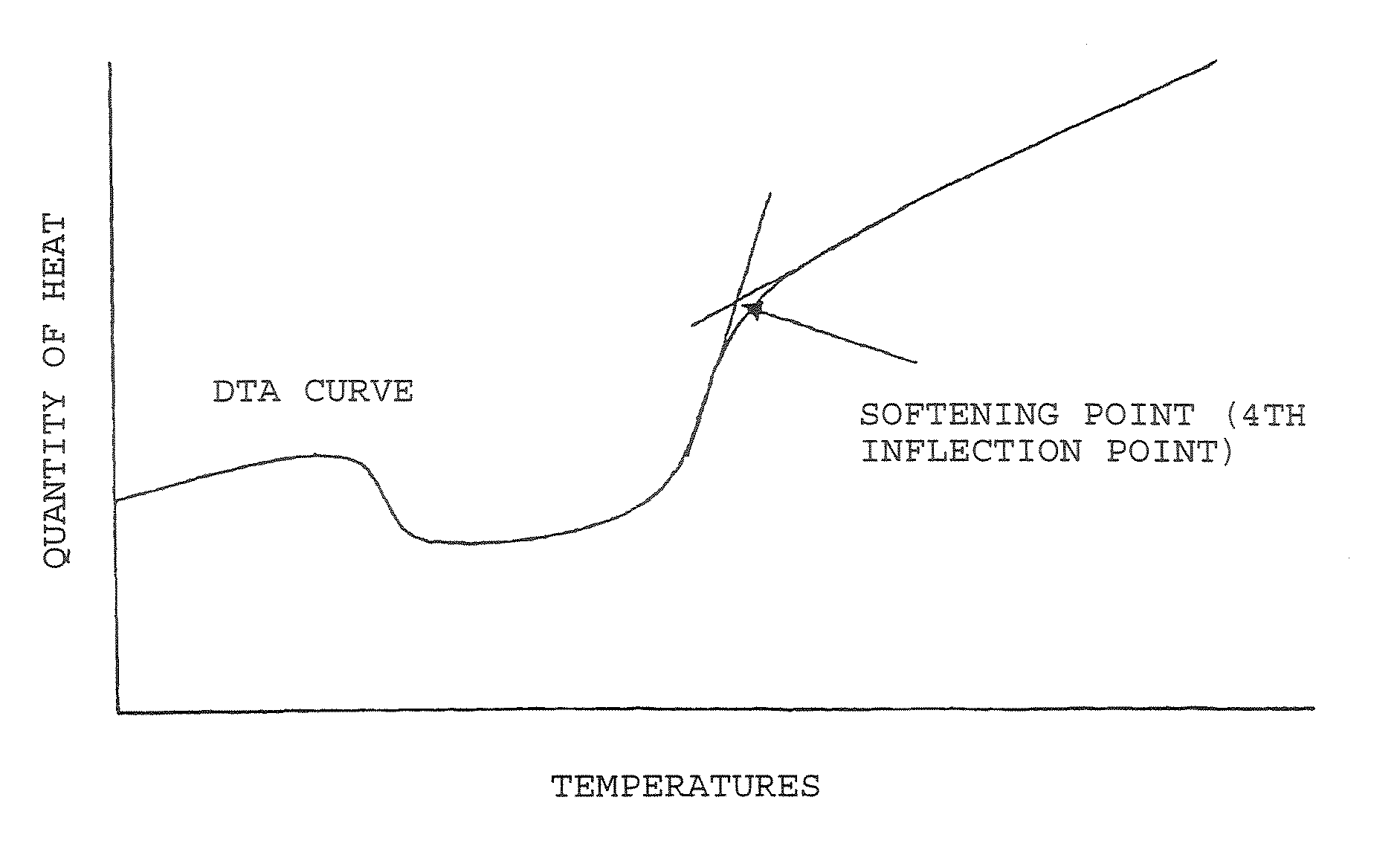Process for producing substrate
a substrate and processing technology, applied in glass reforming apparatus, glass making apparatus, manufacturing tools, etc., can solve the problems of difficult control of the composition of the desired green sheet, increase of the number of steps, and increase of the cost, so as to achieve good conductive pattern, reliable, and free from disconnection
- Summary
- Abstract
- Description
- Claims
- Application Information
AI Technical Summary
Benefits of technology
Problems solved by technology
Method used
Image
Examples
example 1
[0035] The borosilicate glass flakes obtained as described above, were put into an alumina container and heated in the atmosphere at 700° C. for 5 hours. After the heating, the borosilicate glass flakes were taken out from the alumina container and pulverized by a dry system vibration ball mill for 2 hours and sieved through a screen of 300 mesh. The sieved product was again additionally pulverized by a dry system vibration ball mill for 1 hour to obtain a glass powder. The average particle size, the specific surface area and the moisture-deposition amount of this glass powder were measured as described below. The respective measurement results are shown in Table 1.
[0036] Average particle diameter (D50%): Measured by means of a laser diffraction diffusion-type particle size distribution meter (Microtrac, manufactured by NIKKISO CO., LTD.) using water as a dispersant.
[0037] Specific surface area (BET): Measured by means of a fluid BET1 point type (automatic specific surface area me...
example 2
[0040] A glass powder was prepared in the same manner as in Example 1. And, this glass powder was put into a constant temperature constant humidity container at 40° C. under a relative humidity of 60% and held for 16 hours. Thereafter, in the same manner as in Example 1, the average particle size, the specific surface area, the moisture-deposition amount of glass powder, and the time until boric acid crystals precipitated when it was formed into a green sheet, were measured. The results are shown in Table 1.
example 3
[0041] The same treatment as in Example 1 was carried out except that the borosilicate glass flakes were heat-treated at 660° C. for 5 hours. The average particle diameter, the specific surface area and the moisture deposition amount of the glass powder, and the time until boric acid crystals precipitated when it was formed into a green sheet, are shown in Table 1.
PUM
| Property | Measurement | Unit |
|---|---|---|
| softening point | aaaaa | aaaaa |
| glass transition temperature | aaaaa | aaaaa |
| temperature | aaaaa | aaaaa |
Abstract
Description
Claims
Application Information
 Login to View More
Login to View More - R&D
- Intellectual Property
- Life Sciences
- Materials
- Tech Scout
- Unparalleled Data Quality
- Higher Quality Content
- 60% Fewer Hallucinations
Browse by: Latest US Patents, China's latest patents, Technical Efficacy Thesaurus, Application Domain, Technology Topic, Popular Technical Reports.
© 2025 PatSnap. All rights reserved.Legal|Privacy policy|Modern Slavery Act Transparency Statement|Sitemap|About US| Contact US: help@patsnap.com


